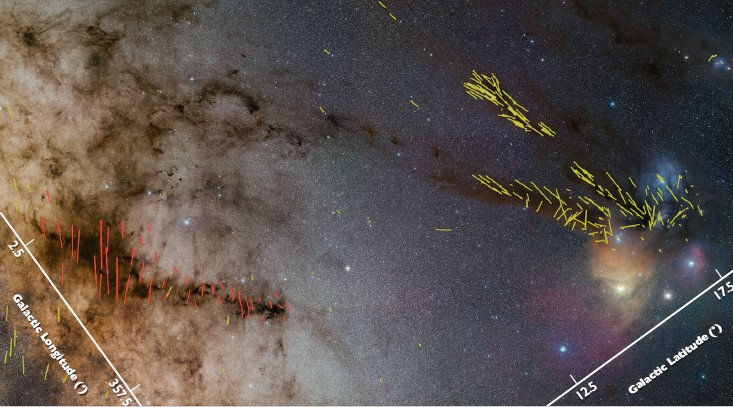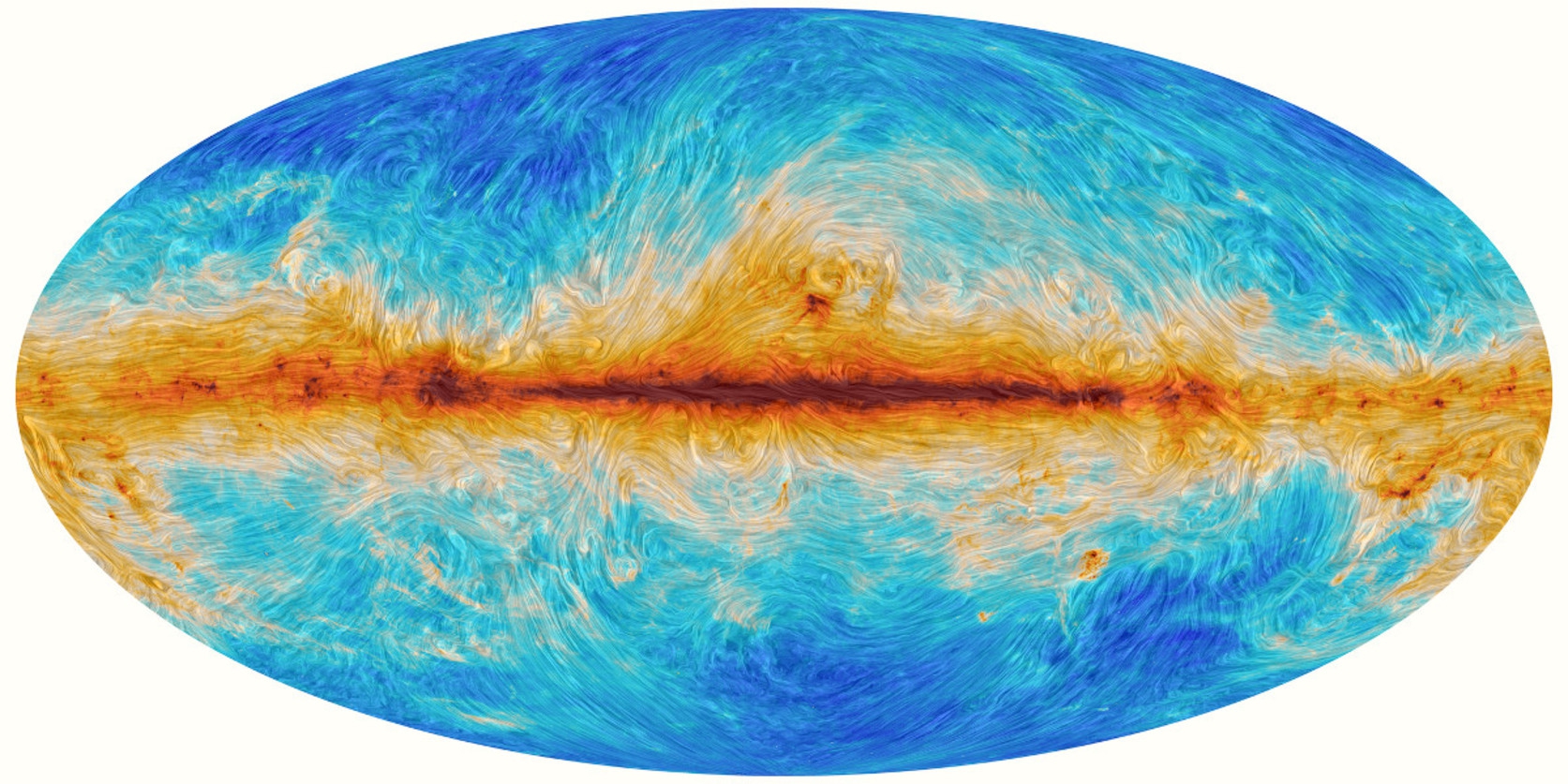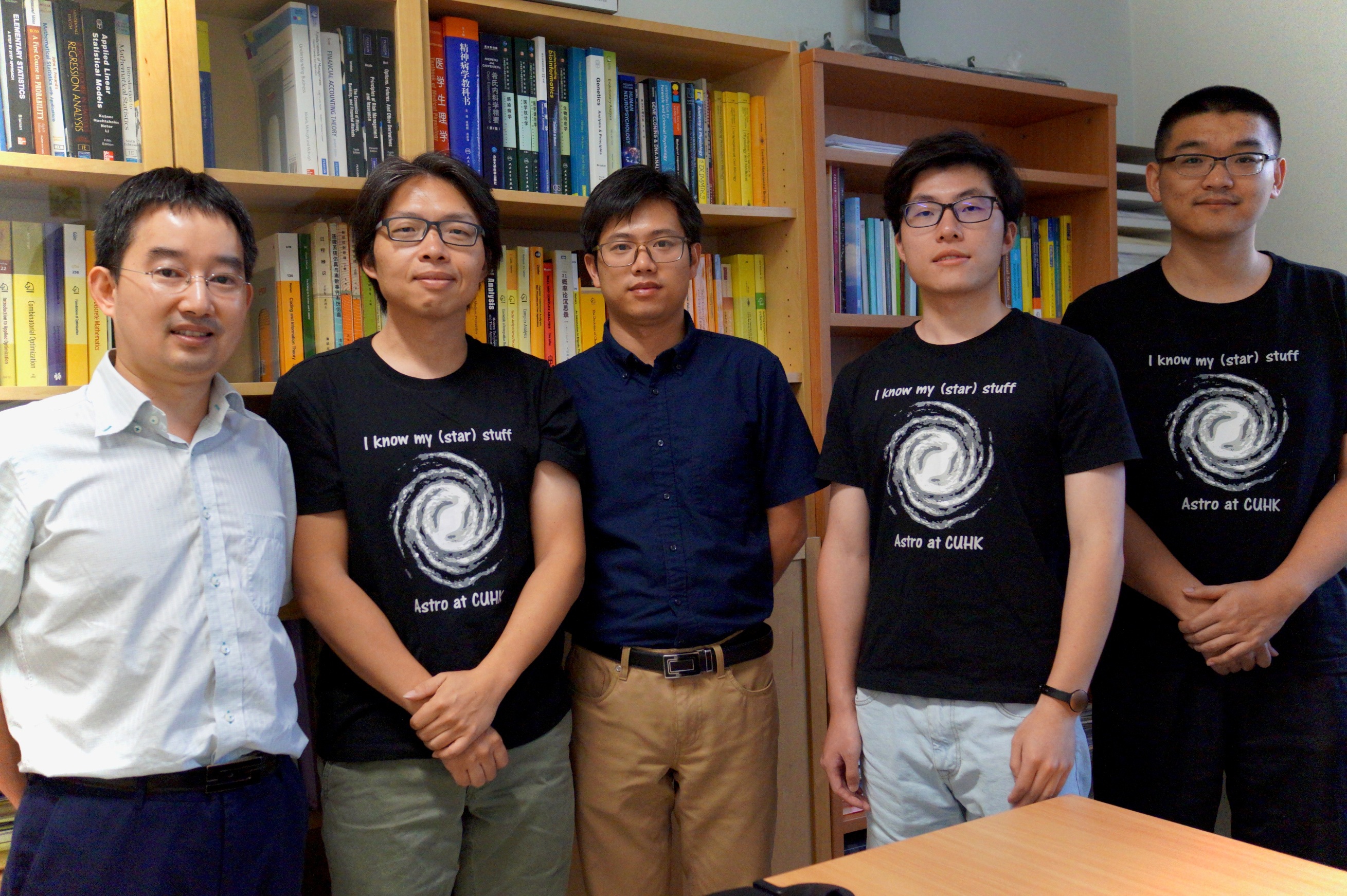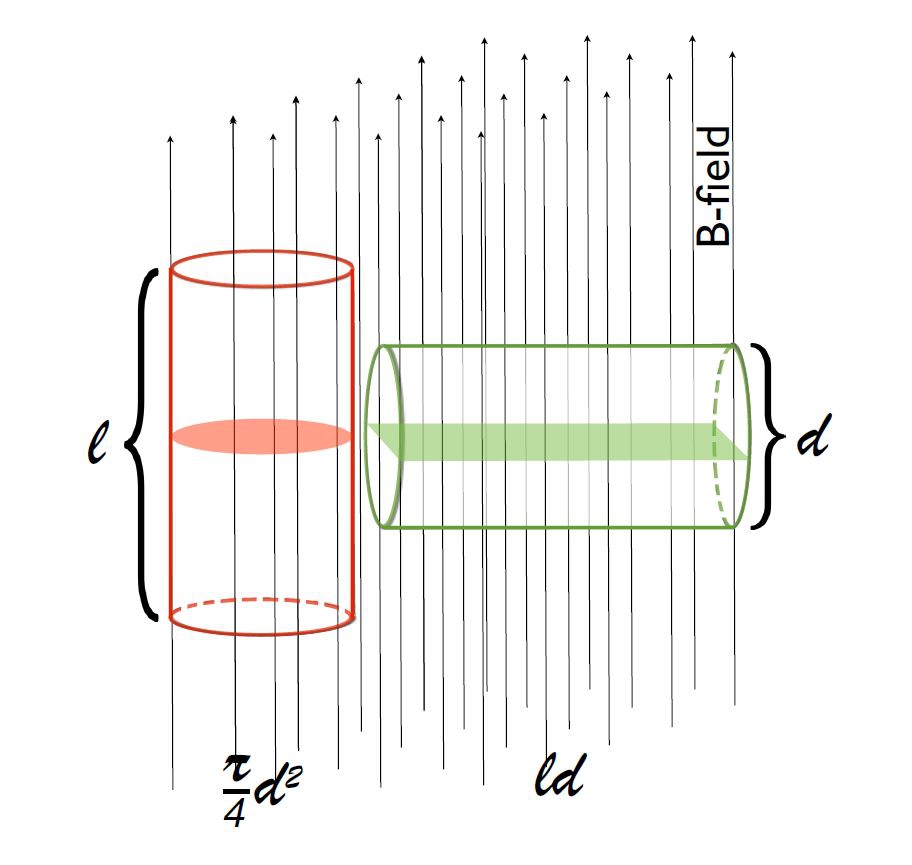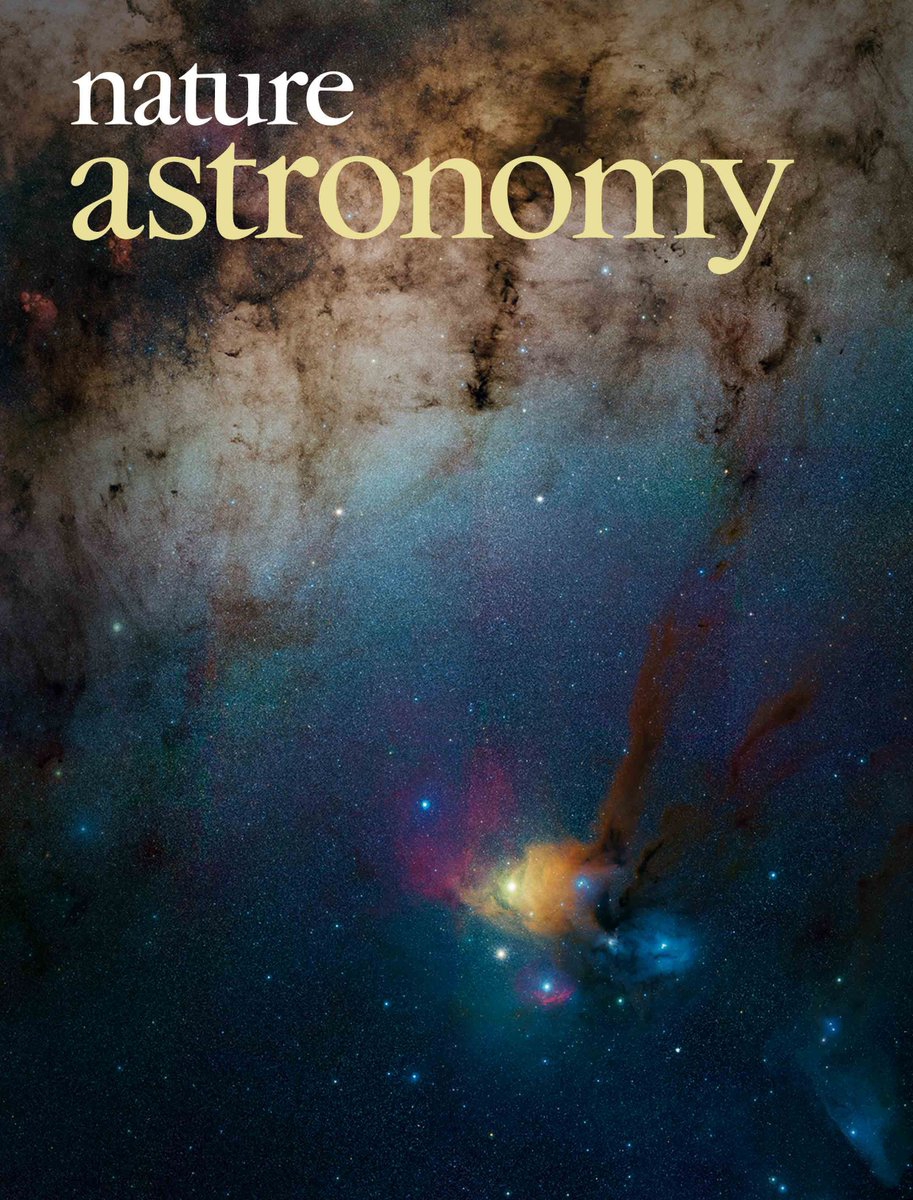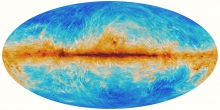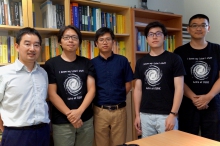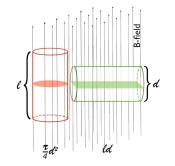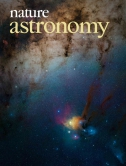CUHK
News Centre
CUHK Physicist and Statistician Work Together to Reveal Link Between Magnetic Fields and Birth Rate of Stars
Prof. Hua-bai Li of the Department of Physics and Prof. Xiaodan Fan of the Department of Statistics, The Chinese University of Hong Kong (CUHK), have recently led their students to discover a mechanism that decides the birth rate of stars. The groundbreaking findings made cover story in the August issue of Nature Astronomy.
Distributed along the spiral arms of our Milky Way, dense gas clouds (approximately 10 light years in size) are where stars are born; they are cities of stars. Stars are basically spherical gas clumps with density so high that self-gravity can fuse hydrogen atoms into helium. Just like Hong Kong has a comparable size to Zhuhai but with 5 times the population, gas clouds can have very different stellar populations, but astronomers have been puzzled by the very different stellar populations from clouds that are comparable in size and age, until this study.
Understanding star birth rates is a central goal of modern star formation models. The main stream theories on star birth rates are based on cloud turbulence, which, however, does not show a clear difference for clouds with apparently different stellar populations. Professor Li’s group studied these dense clouds from a different point of view: magnetic fields (B-fields), which are ubiquitous in the Milky Way. Qilao Gu, a first-year Ph.D. student of the Department of Physics in charge of calculating the B-field direction, said: ‘I am excited to be involved in an novel project from the very beginning of my graduate studies.’
The group found that clouds and their B-fields have two typical alignments: either parallel or perpendicular. Moreover, they discovered a correlation when comparing the cloud-field alignments with star birth rates: the clouds parallel with B-fields happen to have higher birth rates.
Prudent statistical analysis helps unveil stellar mystery
This was such a surprising result that the team wanted to be extra careful in judging how significant the result was. This was done with help from Prof. Xiaodan Fan and his Ph.D. student Hangjin Jiang, experts in statistical analysis.
Professor Fan recalled, ‘When Hua-bai approached me with this problem, I highly appreciated his prudence. Many statistical methods are used without seriously checking the needed assumptions. But to correctly select or design a statistical method, one needs to consider comprehensively the sample size of the data, the sampling design, the uncertainty of measurement, etc. Statisticians also emphasize the uncertainty of any inference.’
‘I was excited to be able to apply my statistical skills in such a big scientific problem at the scale of nebulas. I am also glad to see that general statistical principles are helpful in such a wide range of fields.’ added Hangjin Jiang, who performed all the statistical analysis under Professor Fan’s advice.
Involving students in world-class research
The team successfully found evidence of B-fields being a primary regulator of star birth rates. Professor Li explained, ‘We can imagine B-fields as stretched rubber bands that tend to hinder gas movements perpendicular to the field direction. The number of the “rubber bands” is proportional to the B-field strength. Assuming a constant field strength, a cylindrical cloud perpendicular to the field will intersect more “rubber bands” than when the same cylinder is arranged aligned with the field. More “rubber bands” mean more support against the gas getting denser under self-gravity and thus can better hinder star formation.’
Professor Li has always tried to challenge his undergraduate astronomy class students with bonus homework based on the research topics he is working on. Besides this study, some concepts involved in Professor Li’s study on massive star formation published in Nature (2015) were also given to his students as bonus homework in 2014. ‘Most of our students are fully equipped to solve complicated textbook problems, but not motivated to make bold assumptions to tackle open questions. As a teacher in a research university, I hope the demonstration that homework problems can already be the cores of journal publications can inspire undergraduate students doing research. After all, it is open questions instead of textbook questions that drive the passion of a researcher.’
Next generation B-field mapping instrument for further studies
Besides the on-going numerical simulations to further study star birth rates, the team has another ambitious plan. ‘Regardless of the significance of our result, the current study involves only a dozen nearby (within 1000 light year) dense clouds.’ said Yapeng Zhang, co-author and Ph.D. student in Professor Li’s group, who is leading the construction of the next generation B-field mapping instrument. The instrument is planned to be installed in 2019 on a 12m far infrared telescope constructed by Japan in the Atacama Desert, Chile. With this new instrument, the team will be able to tackle the link between B-fields and star formation with a higher resolution or more (further) clouds.
A full version of the paper can be found at:
https://www.nature.com/articles/s41550-017-0158
The colorful nebulae on the right (named Ophiuchus) are due to the active stellar feedback, while the dark cloud on the left (named Pipe) is barren of stars. The red and yellow vectors show B-filed directions. It is clear that the fields tend to be parallel with Ophiuchus, but perpendicular to Pipe. (Image credit: Stéphane Guisard)
Magnetic fields at Milky-Way scale. The Galactic disk is lying in the middle level and darker brown colours means higher column densities. The filamentary structures indicate the B-field directions, which permeate the entire Milky Way. The B-field directions are observed by the Planck satellite. (Image credit: European Space Agency)
(From left) Prof. Xiaodan FAN, Associate Professor, Department of Statistics, Prof. Hua-bai LI, Assistant Professor, Department of Physics, and three Ph.D. students in the research team Hangjin JIANG, Qilao GU and Yapeng ZHANG.
Field lines work like rubber bands. Assuming a constant field strength, a cylindrical cloud perpendicular to the field will intersect more field lines than when the same cylinder is arranged aligned with the field. More field lines mean more support against the gas getting denser under self-gravity and thus can better hinder star formation.


